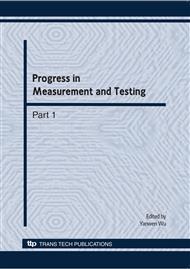p.3
p.11
p.17
p.21
p.27
p.33
p.39
p.44
A Novel Image Fusion Algorithm Based on Local Contrast and Improved PCNN Model
Abstract:
The proposed new fusion algorithm is based on the improved pulse coupled neural network (PCNN) model, the fundamental characteristics of images and the properties of human vision system. Compared with the traditional algorithm where the linking strength of each neuron is the same and its value is chosen through experimentation, this algorithm uses the contrast of each pixel as its value, so that the linking strength of each pixel can be chosen adaptively. After the processing of PCNN with the adaptive linking strength, new fire mapping images are obtained for each image taking part in the fusion. The clear objects of each original image are decided by the compare-selection operator with the fire mapping images pixel by pixel and then all of them are merged into a new clear image. Furthermore, by this algorithm, other parameters, for example, , the threshold adjusting constant, only have a slight effect on the new fused image. Therefore, it overcomes the difficulty in adjusting parameters in PCNN. Experimental results indicate that the method outperforms the traditional approaches in preserving edge information while improving texture information.
Info:
Periodical:
Pages:
21-26
Citation:
Online since:
May 2010
Authors:
Price:
Сopyright:
© 2010 Trans Tech Publications Ltd. All Rights Reserved
Share:
Citation:


